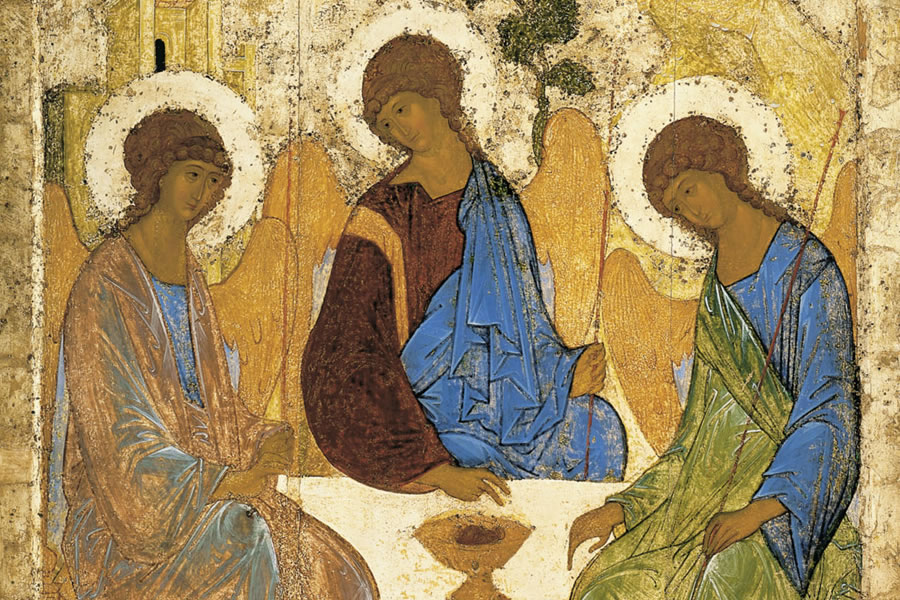
Astonishing Mystery
05-30-2021Weekly Reflection© J. S. Paluch CompanyAstonishing is the term that Clement of Alexandria used in referring to the Holy Trinity. Today’s scriptures tell the astonishing stories, from Moses in the Old Testament to the end of Matthew’s Gospel, of how we mere humans are intended to be intimately associated with our loving God. We see in Deuteronomy that Moses reminds the new generation of Israelites of the “astonishing” fact that, even though the ancient world teemed with gods, their God was the only God, that “there is no other.” Saint Paul in the letter to the Romans write about those who follow the Spirit as being “sons” of God, which of course would make us brothers and sisters of Christ, and, as he says, “joint heirs with Christ.” Another astonishing statement! Finally, Christ bestows the Holy Spirit on the world as his continuing presence and force of divine revelation. How can we not be astonished?
The Mystery is the Masterpiece
The Most Holy Trinity is the central truth, and, indeed, mystery of our lives as believers in God. Even so, few seem to be able to talk about it (Or is it “them”?). must we be satisfied to take this truth as an inscrutable object of faith that we can easily ignore? Not at all! We are immersed in Trinitarian reality in new ways.
Please consider these clues to God as more than just Person of the Father. Remember the words of God in scripture when the world and all its wonders were coming to be. The formulas for each stage in created begin with “Let us…” (gen 1:26). This is not merely the “Royal We.” This is God as a plurality of Being. In Isaiah, the seraphim cray out, “Holy, holy, holy…” (Is 6:3). Ancient Middle Eastern superlatives come in threes, but why not consider it a sign of God’s three-ness? And these Old Testament foreshadowings are nothing compared to our well-known baptismal formula, “I baptize you in the name of the Father, and of the Son, and of the Holy Spirit.” Notice that “name” is singular, and yet refers to three persons. Finally, as Christ tells the Apostles in today’s Gospel, they are to go out and teach in that same singular triple name.
Shall We Dance?
The famous icon by the equally famous 14th century iconographer Andrei Rublev is a depiction of the Trinity densely packed with symbolic content. The tree “angels” sitting at the table are actually meant to be the Father, the Son, and the Holy Spirit. They related to each other in loving gesture, each one to the other, often described as “dance-like.” And yet this triangular circle seems incomplete. Indeed it is, because we must become one with this circle of life-giving love. As in a dance, we are drawn into the divine life in the Trinitarian embrace of abundant glory and harmony. Then we complete the movement by taking that love incarnated out to the world, revealing the mystery to our sisters and brothers through our own lives.
BACK TO LIST